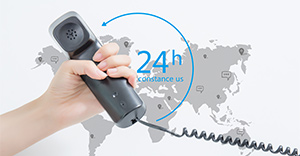
Release time:2025-06-11
The surface treatment of plastic products mainly includes coating treatment and coating treatment. Plastics generally have high crystallinity, low polarity or non polarity, and low surface energy, which will affect the adhesion of the coating. Because plastic is a non-conductive insulator, it cannot be coated directly on the surface of plastic according to the technical standard of electroplating. Therefore, before surface treatment, necessary pretreatment should be carried out to improve the adhesion of coating and provide a conductive bottom layer with excellent adhesion for coating.
1. Pretreatment of coating
Pretreatment includes degreasing treatment of plastic surface, that is, cleaning the oil stain and release agent on the surface, and activation treatment of plastic surface, in order to improve the adhesion of coating.
(1) Degreasing of plastic products
Similar to the surface degreasing of metal products, the degreasing of plastic products can be cleaned with organic solvents or alkaline aqueous solution containing surfactant. Organic solvent degreasing is applicable to the cleaning of white wax, beeswax, fat and other organic dirt on the surface of plastic. The organic solvent used should be insoluble, non swelling, non cracking, low boiling point, volatile, non-toxic and non combustible.
Alkaline aqueous solution is suitable for degreasing alkali resistant plastics. The solution is rich in caustic soda, alkaline salts and various externally active substances. The most commonly used surface active substances are OP series, namely alkyl phenol polyoxyethylene ether, which will not form foam and will not remain on the plastic surface.
(2) Activation of the appearance of plastic products
This activation is to improve the surface properties of the plastic, that is, generate some polar groups on the surface of the plastic or coarsen it, so that the coating is easier to be wetted and adsorbed on the surface of the parts. The method of surface activation treatment.
Many, such as chemical oxidation, flame oxidation, solvent vapor etching and corona discharge oxidation. Among them, the chemical crystal oxidation treatment method is widely used. The commonly used method is chromic acid treatment solution. Its typical formula is potassium dichromate 4.5%, water 8.0%, concentrated sulfuric acid (more than 96%) 87.5%.
Some plastic products, such as polystyrene and ABS plastic, can also be directly coated.
In order to obtain high-quality coating, chemical oxidation treatment is also useful. For example, ABS plastic can be etched with dilute chromic acid treatment solution after degreasing. Its typical treatment formula is chromic acid 420 g / L and sulfuric acid (specific gravity 1.83) 200 ml / L. The typical treatment process is 65 ℃ 70 ℃ / 5 minutes and 10 minutes, washed with water and dry.
The advantage of chromic acid treatment solution etching is that no matter how messy the shape of plastic products is, they can be treated uniformly. The disadvantage is that the operation is risky and there is doubt of pollution.
2. Pretreatment of coating
The purpose of coating pretreatment is to improve the adhesion between the coating and the plastic surface, so that the plastic surface forms a conductive metal bottom layer. The first step of pretreatment process is rich in: mechanical coarsening, chemical degreasing, chemical coarsening, sensitization, activation, recovery and electroless plating. The first three items are to improve the adhesion of the coating, and the last four items are to form a conductive metal bottom layer.
(1) Mechanical and chemical roughening
Mechanical coarsening and chemical coarsening are to coarsen the plastic surface by mechanical and chemical methods respectively, so as to increase the contact area between the coating and the substrate. It is generally believed that the binding force achieved by mechanical coarsening is only about 10% of that achieved by chemical coarsening.
(2) Chemical degreasing
The oil removal method of plastic surface coating before coating is the same as that of coating before coating.
(3) Sensitization
Sensitization is to make the plastic surface with certain adsorption capacity absorb some easily oxidized substances, such as tin dichloride, titanium trichloride, etc. These adsorbed oxidizable substances are oxidized during the activation process, and the activator is reduced to catalytic nuclei, which are retained on the surface of the product. The role of sensitization is to lay a foundation for subsequent electroless plating of metal layers.
(4) Activation
Activation is the treatment of the sensitized surface with a solution of catalytically active metal compounds. Essentially, the product adsorbed with the restoring agent is immersed in the oxidant aqueous solution rich in precious metal salts, so that the precious metal ions as the oxidant are restored by S2 n. The restored precious metal is colloidal particles accumulated on the surface of the product, which has strong catalytic activity. When the surface is immersed in the electroless plating solution, these particles become the catalytic intermediate, which accelerates the reaction speed of electroless plating.
(5) Recovery Disposal
Before electroless plating, dip the product cleaned with clean water after activation treatment into a certain concentration of reductant solution for electroless plating to recover and remove the uncleaned activator, which is called recovery treatment. Formaldehyde solution is used for recovery treatment during electroless copper plating, and sodium hypophosphite solution is used for recovery treatment during electroless nickel plating.
(6) Electroless plating
The purpose of electroless plating is to form a conductive metal film on the outer surface of plastic products and create conditions for electroplating the metal layer of plastic products. Therefore, electroless plating is the key process of plastic electroplating.

